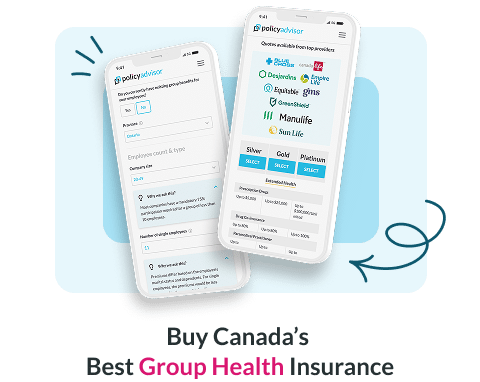- EAPs offer financial and legal consultations that help employees with retirement savings, estate planning, and tax strategies
- Emotional support is crucial for employees transitioning to retirement, with EAPs providing counseling and resources for mental well-being
- Employers who invest in EAPs enhance employee retention and productivity by supporting long-term financial health and reducing workplace stress
- EAPs complement government programs like CPP, helping employees optimize their personal savings and plan for a secure retirement
Employee Assistance Programs (EAPs) are often associated with mental health support, crisis counselling, and workplace conflict resolution. However, their role today has expanded well beyond mental wellness. EAPs provide free access to financial advisors, legal consultations, eldercare support, and emotional counselling.
In this article, we’ll discuss the benefits of EAPs in retirement planning and how they can help retirees prepare financially, emotionally, and legally for life after retirement.
What are Employee Assistance Programs (EAPs)?
EAPs are employer-sponsored programs designed to support the well-being of employees. They’re an important part of an employee benefits package. While initially focused on mental health and substance abuse interventions, today’s EAPs offer a broader scope of services, including:
- Confidential mental health and counselling services
- Financial advice and budgeting tools
- Legal assistance for wills and estate planning
- Referral services for eldercare and housing
- Work-life balance and stress management resources
What are the benefits of Employee Assistance Programs (EAP) for retirement?
Employee Assistance Programs (EAPs) help employees prepare for retirement by offering practical, personalized support. They provide access to financial and legal advice, emotional counselling, and lifestyle planning. These services empower employees to retire with confidence and clarity, often at no extra cost.
EAPs support retirement planning by offering a wide range of services like:
- Free financial and legal consultations
EAPs offer access to professionals who can guide employees on retirement savings, pensions, wills, and legal documents, helping them make informed decisions
- Debt and credit management
Employees can get help managing debt, improving credit scores, and creating realistic budgets for a stable financial future post-retirement
- Estate and tax planning
EAPs provide resources and expert advice to help employees organize their estate, minimize tax liabilities, and plan how their assets will be distributed among their dependents
- Emotional support for retirement transition
Retirement can bring emotional challenges. EAPs offer counselling and mental health support to help employees cope with identity changes and life adjustments - Pre-retirement education workshops
These workshops educate employees about retirement options, government benefits, income strategies, and lifestyle changes to prepare them mentally and financially - Eldercare and lifestyle planning services
Employees nearing retirement often care for aging parents or spouses. EAPs provide resources for caregiving, housing, and health planning to ease that burden
How much do EAPs cost in Canada?
In Canada, the cost of providing Employee Assistance Programs (EAPs) typically ranges between $3.00 to $4.00 per employee per month, with an average estimate of around $3.50 per employee per month. For example, a small business with 10 employees would pay approximately $420 annually for EAP coverage.
On an annual basis, EAP costs can range from $12 to $40 per employee per year, depending on the provider, level of service, and pricing model used.
Common EAP pricing models include:
- Per employee per month (PEPM): Fixed monthly rate per employee, often with service tiers
- Value-based pricing: Cost tied to employee usage or engagement rates
- Flat-rate pricing: A set annual fee based on company size
- Per-visit pricing: Charges based on actual usage of services
- Hybrid models: Combine fixed fees with usage-based components
EAPs are generally free for all employees, as the employer bears the full cost to support employee mental health, well-being, and productivity. This investment is seen as affordable and can save money by lowering absenteeism, reducing disability claims, and improving work performance.
What factors influence the cost of EAPs in Canada?
The cost of Employee Assistance Programs (EAPs) in Canada varies based on several organizational and program-related factors. These include company size, the range of services provided, delivery methods, accessibility, and how frequently employees use the services.
Understanding these elements can help employers choose an EAP that offers the right balance between affordability and employee support features.
What financial planning support do EAPs offer for retirement?
EAPs offer employees direct access to financial professionals and resources that play a key role in building effective retirement strategies. With services like free consultations, retirement income planning tools, and debt management support, EAPs ensure employees have the financial guidance they need to plan for a secure future.
EAPs offer the following benefits to help with financial planning:
- Free 30-minute financial consultations with licensed professionals
- Tools for retirement income planning and cash flow forecasting
- Help with debt consolidation, budgeting, and credit repair
- Access to retirement readiness assessments
- Educational webinars and planning guides
Can EAPs help with legal planning for retirement?
Yes, EAPs often include legal consultation services that are crucial for retirement preparation. From will and estate planning to tax support and real estate advice, these services help employees navigate legal challenges and reduce costly expenses as they plan for the future.
Assistance with will and estate planning
EAPs often include access to legal professionals who can help employees create or update their wills. This ensures that assets are distributed according to their wishes, and it can help avoid potential legal disputes or complications after their passing.
Drafting of powers of attorney and health directives
EAPs can support you in preparing key documents like a power of attorney, which lets someone you trust make decisions if you’re unable to, and a health directive, which outlines your medical care preferences. These documents are critical for ensuring that an individual’s wishes are respected during times of illness or emergency.
Legal advice on housing, real estate, or downsizing in retirement
As retirement approaches, many individuals consider relocating or downsizing their homes. EAPs offer legal advice to navigate housing decisions, whether it’s selling property, understanding real estate contracts, or managing the logistics of a move. This support helps retirees make informed decisions that align with their financial and lifestyle goals.
Tax planning support, including discounts on filing services
EAPs often connect employees with tax experts who can help them plan smart ways to save for retirement and withdraw money in a tax-efficient way later on. Some programs also offer discounts on tax preparation services, ensuring employees receive professional support at an affordable rate.
What emotional and psychological support do EAPs offer for pre-retirees?
Retirement brings more than financial changes. It can trigger stress, uncertainty, and emotional challenges. Employee Assistance Programs (EAPs) give pre-retirees the tools to manage this transition.
Through one-on-one counselling and practical resources, EAPs help individuals face retirement. EAPs typically offer:
- Support for retirement-related anxiety, fear of change, or identity loss
- Help transitioning from full-time work to retirement life
- Relationship counselling to ease changes in family dynamics
- Tools and exercises to find purpose and fulfillment in retirement
Can EAPs help with life transitions and eldercare planning?
Yes, EAPs provide valuable support for life transitions, including retirement and eldercare planning. They offer pre-retirement workshops and transition seminars to help employees prepare for the change. EAPs also give access to services like identity theft protection and provide referrals for housing, long-term care, and eldercare resources.
How can I make the most of EAP services for retirement planning?
You can make the most of Employee Assistance Programs (EAPs) by using available resources early and consistently. Combining EAP services with your employer’s retirement plans helps you reduce costs, minimize risks, and transition smoothly into retirement.
- Map out a retirement timeline with EAP-provided financial advisors
Start your retirement planning early by working with EAP financial experts to create a clear timeline. This allows you to plan key milestones, assess your financial position, and adjust your approach as your goals evolve.
- Coordinate with your employer’s Group RRSP, PRPP, or pension plan
Maximize your retirement savings by integrating EAP advice with your employer’s Group RRSP, PRPP, or pension plan. This ensures you make the most of employer contributions and tax benefits.
- Use EAP legal experts to align your estate plans with your retirement strategy
Align your estate planning with retirement goals by consulting EAP legal professionals. This will help you create or update your will, set up powers of attorney, and plan for the efficient transfer of assets.
- Revisit EAP services yearly as your retirement needs evolve
Regularly review your retirement strategy with EAP services to ensure your plan remains relevant to your current needs. Annual check-ins allow you to adjust your plan based on changes in your financial situation, goals, or life circumstances.
- Proactive use of EAP resources can drastically reduce professional service costs and retirement risk
By using EAP resources proactively, you can avoid costly external consultations and reduce the risk of missteps in your retirement planning, making the process more affordable and secure.
What are the benefits of EAPs for employers and employees?
Employee Assistance Programs (EAPs) offer valuable benefits for employees and employers by addressing key issues that impact workplace productivity and employee retention. By providing comprehensive support, EAPs help improve workplace focus, strengthen employer branding, and reduce long-term costs.
- Boosting employee productivity and morale
Financial stress is one of the leading causes of employee distraction. EAPs that support retirement planning directly address these concerns, reducing absenteeism and improving focus by helping employees manage future anxieties effectively
- Strengthening employer branding and talent retention
Offering robust EAPs shows that an employer values long-term employee well-being. This commitment not only attracts top talent but also fosters loyalty, reduces turnover, and particularly appeals to older workers who prioritize retirement readiness
- Cost-effectiveness and reduced liability
EAPs encourage proactive retirement and financial planning, which can help reduce long-term disability claims, lower health benefit costs, and ease workforce transitions. These benefits contribute to overall cost savings and minimize employer liability over time
What are the best practices for employers offering Employee Assistance Programs (EAPs) to support retirement planning?
Employee Assistance Programs (EAPs) can be a powerful tool for helping employees prepare for retirement, providing them with the necessary emotional, legal, and financial support. To maximize the effectiveness of these programs, employers should follow certain best practices such as promoting awareness, collecting feedback, and updating programs.
- Choosing the right EAP provider
When selecting an EAP provider, prioritize providers with strong expertise in retirement and financial wellness support. Ensure the program offers a comprehensive mix of services, including legal, psychological, and financial planning resources. This integrated approach will better equip employees for retirement transitions. - Promote awareness and utilization
An EAP is only effective if employees are aware of it and actively use the services. Employers should take proactive steps to promote these programs through onboarding sessions, regular email campaigns, and HR support. Focus on raising awareness among employees aged 45 and older, as they may be closer to retirement and in need of the services. - Continuously evaluate and update programs
Regularly collect employee feedback to gauge the effectiveness of the EAP services and ensure they meet employees’ evolving needs. As retirement planning becomes more complex with changes in CPP benefits and eldercare responsibilities, employers should update their EAP offerings to ensure employees receive relevant and timely support.
What is the role of the Canada Pension Plan (CPP) in retirement planning?
The Canada Pension Plan (CPP) provides foundational income for retirees but doesn’t fully replace working income. EAPs complement CPP by helping employees estimate their CPP benefits, understand the impact of early versus deferred retirement, and integrate CPP with personal savings.
How do EAPs align with Group RRSPs and employer pension plans?
Employers offering Group RRSPs, DPSPs, or PRPPs can use EAPs to provide employees with education on contribution strategies, explain matching rules, vesting schedules, and promote long-term investment planning to strengthen their retirement strategy.
How can EAPs help maximize tax advantages for retirement?
EAP financial advisors help employees make the most of their RRSPs, understand how TFSAs can support retirement, and plan tax-smart withdrawals to get the most from their savings.
Start planning for a stress-free retirement
Get expert financial, legal, and emotional support through your Employee Assistance Program. Schedule a call with a licensed advisor to see how EAPs and employer benefits can work together for your retirement plan.
Frequently asked questions
What is the hidden value of Employee Assistance Programs in retirement planning?
EAPs offer more than just basic employee support—they provide integrated emotional, legal, and financial resources that help employees prepare for retirement in a well-rounded way. From managing the emotional side of the transition to offering legal advice for estate planning and financial consultations for retirement savings, EAPs address multiple aspects of retirement preparation, often at no additional cost to the employee.
How do EAPs complement Canada’s public pension system?
While the Canada Pension Plan (CPP) and other government programs offer foundational support, they may not fully cover an individual’s retirement needs. EAPs bridge this gap by offering personalized advice on budgeting, savings, and managing finances. They help employees understand how to supplement their public pension, optimize retirement savings, and plan for unexpected expenses that may not be covered by government programs.
Can retirees access EAP services?
Some employers extend EAP access to retirees, either for a limited time or as part of retirement transition packages. This can be a valuable resource during the shift from full-time work to retirement, helping retirees navigate financial, legal, or emotional challenges during this major life change. Access to EAP services can continue to support retirees as they adjust to a new lifestyle and financial situation.
Why should employers invest in robust EAP offerings?
Investing in strong EAP offerings benefits employers by improving overall employee well-being, boosting productivity, and reducing healthcare costs. Employees who have access to comprehensive support services are more likely to be engaged, motivated, and able to focus on their work. Additionally, offering an employee-centred policy enhances the company’s reputation as a supportive and caring employer, which can improve employee retention and attract top talent.
What types of financial advice do EAPs provide?
EAPs offer a wide range of financial advice tailored to employees’ needs, including debt management, retirement budgeting, estate planning, and pension analysis. Depending on the provider, EAPs may offer services like personalized budgeting help to manage pre-retirement expenses, guidance on how to draw from pension plans efficiently, or assistance with planning for long-term care or unexpected financial challenges during retirement.
Employee Assistance Programs (EAPs) have evolved to become a crucial resource in retirement planning, offering more than just mental health support. Today’s EAPs provide employees with access to financial advisors, legal consultations, emotional support, and pre-retirement education. These services help employees manage the complexities of retirement, from budgeting and tax planning to estate management and emotional adjustments. By supporting employees through these transitions, EAPs empower them to retire confidently and smoothly. Employers benefit from EAPS by enhancing employee productivity, reducing absenteeism, and strengthening retention, especially among older employees who are ready for retirement.






